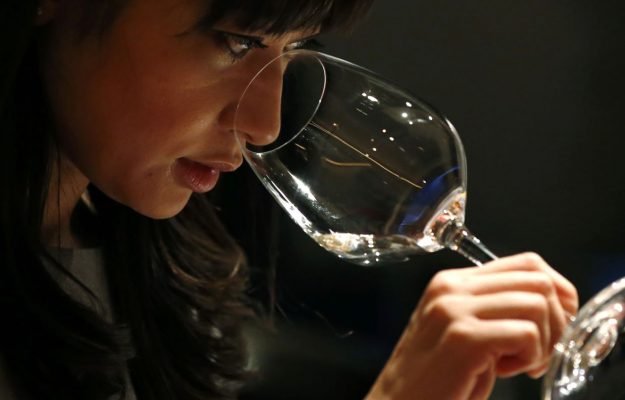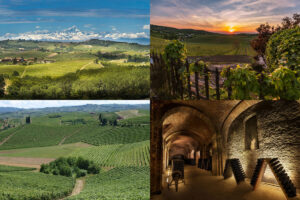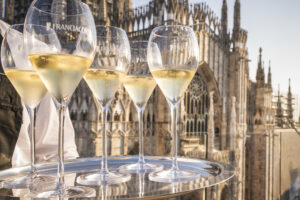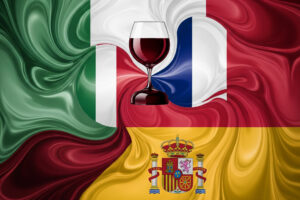Italy and Japan are linked by a friendship that is, at least formally, over 150 years old, but that has its roots even further in time, back in the 16th century. It is not surprising that even today the relations between the two countries are decidedly solid, with obvious benefits for both economies, which at the moment are not doing well, united, also in this, by a long period of stagnation and a huge public debt, but determined to reverse the trend. How is it doing, after a moment of clouding, Italian wine, which in Japan has its first outlet in Asia: in the wake of the free trade agreement with the EU, which came into force on February 1, 2019, wine imports Italians touched € 125 million in the first 8 months of 2019, from € 108 million in the same period of 2018, equal to a growth of + 15.7%. Certainly an important growth, but the market share is still far from France, where 55% of the total wine import comes from.
Well, but not yet very well, especially since things are a bit more complex than one might imagine, as told to WineNews, from the Tokyo stop of Simply Italian Great Wines Asia & Australia Tour by Iem, one of the greatest experts of Italian wine in the rising sun, Isao Miyajima. “The abolition of duties had a more symbolic than a substantial role, given that they weighed for just 70 euro cents per bottle, namely nothing for wines like Barolo and Brunello, but something more for wines for daily consumption. Many importers and shops, taking advantage of the moment, have focused on discounts and promotions, at a time when wine is becoming a daily beverage. In this context, the figure of bubbles stands out, having grown in the first few months of 2019 by + 28%, but it is strange that Italian wine occupies just 15% of the market: in Japan there is great love for Italy, its catering, design, fashion, and then Italy is a privileged tourist destination. There is still room to grow, but until a few years ago the tricolor wine was closed in the circle of Italian restaurants, and only now is it coming out, in Japanese restaurants and homes. After all, Japanese and Italian cuisine have much in common: respect for raw materials, the exaltation of primary flavors, simplicity, that's why in Japan there is great love for Italian cuisine and in Italy great passion for the Japanese one, a feeling for which Italian wine could work very well with Japanese cuisine ”.
Something, however, must also be changed in the approach to the market, because “Japanese consumers - resumes Isao Miyajima - need to hear the story of producers and territories, there is curiosity, it is not enough to know that a wine is good, there is the desire to know what is behind it, in terms of history and culture. Communication is important, while young people, here as in the rest of the world, have grown up in a wealthy society, so they are not “thirsty” as we were. There is less aspiration to discover, and this philosophically is fine, but for consumption no. Among the strong ones, there is Franciacorta, which in recent months has grown by + 22.5%, certainly not a low-priced wine, and this means that the Japanese are willing to pay when they recognize quality and certain characteristics to a wine. We need to create the image of the brand, and Franciacorta, linked to fashion, in Milan and to Italian lifestyle is a fascinating product. Other bubbles, cheaper, are more difficult. In the future - concludes Isao Miyajima - thinking of wine as a daily consumer product, we will move towards elegant, not too concentrated products, therefore more Montefalco Rosso than Sagrantino, more Aglianico than Taurasi, more Rosso di Montalcino than Brunello, but also Chianti Classic, not too arrogant wines that can accompany and enhance foods ”.
This is the current framework, within which a sector that, in the long term, will have to untangle more than one skein moves, starting with the maintenance of the system of imports which, according to the vice president of the Italian Chamber of Commerce in Japan, Francesco Rinarelli, “yes is now splitting, under the blows of digitalization, the breaking of virtual borders and tariff barriers, but also and above all due to demographic factors: today’s importers were born between the 1980s and 1990s, when Japan’s economy was among the healthiest in the world. Then, with the explosion of the real estate bubble of 1992, the economy began to stagnate, and a country that could afford everything, with one of the richest middle classes in the world and savings per family of nearly a million euros, began to see its purchasing power wear out continually, with the richest generation that, starting out, from French and Italian cheeses and wines began to spend on nursing homes ”. This is where the problems arise, given that the generational change in wine consumption has not yet taken place, with “the bulk of the balance sheet of importers still in the hands of the over-50s, while among the younger ones, especially those under 30 years of age - underlines Francesco Rinarelli - wine is almost non-existent crushed by beer and pre-mixed fruit cocktails. There are exceptions and niches, such as the fashion of tapas bars, which has had a certain influence on the success of the Cava, or the now historic Beaujolais Nouveau, supported by France with investments and initiatives. A picture in which importers, often coming from other economic sectors, find themselves more and more uncomfortable, with the risk of closing in a few years, also because they are unable to promote and renew themselves, a limit that also concerns the larger groups, which are struggling to change paradigm and promote wine among young wine lovers”.
Finally, there are the structural limits of Italian wine, which in Japan may weigh a little more. “Compared to the French - resumes Rinarelli - we suffer fragmentation and parochialism, differences and distinctions, aspects that the Japanese consumer hates, and that affect the perception, negatively, of Italian wine which, instead, enjoys great credibility, so that certifications such as the Doc are almost useless: the Japanese are the first to demand quality and to keep watch over it. We find it hard to get together and, when we succeed, the incentives are insufficient and often allocated on a short-term logic. And it is precisely this that, for example, differentiates us from Sopexa's initiatives: it is not a problem of effectiveness, even our promotion knows how to be effective, but of solidity and stability. And then, the presence on the territory: in Japan, only the Franciacorta has an ambassador, and thinking of understanding the market and knowing its customers, without being present, is impossible. And of course, there is no need to rely on the initiative of the importers, who are not very active, who should instead be stimulated. In terms of corporate choices, it takes courage and the ability to invest, but also to change, for example by focusing on ad hoc packaging for the Japanese market. Attention then - continues the vice president of the Chamber of Commerce - to the strategies of our competitors, absolutely solid, like Chile and Australia, and to the Government’s will to raise the taxes on alcohol, which will hit the wine more than the beer, canceling the beneficial effects of the zeroing of duties. The market, on the whole, is saturated, the stagnant economy, the slow turnover of portfolios, while the purchasing power is still in the hands of the over 50s, and the under 25s are still struggling”.
Copyright © 2000/2025
Contatti: info@winenews.it
Seguici anche su Twitter: @WineNewsIt
Seguici anche su Facebook: @winenewsit
Questo articolo è tratto dall'archivio di WineNews - Tutti i diritti riservati - Copyright © 2000/2025








































































































































































































